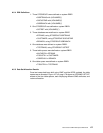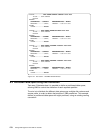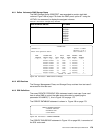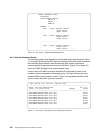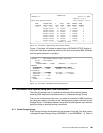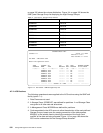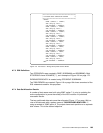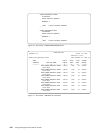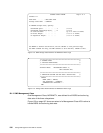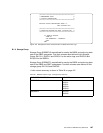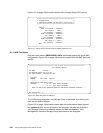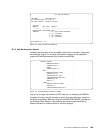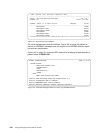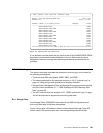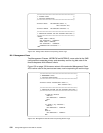
© Copyright IBM Corp. 1999 185
Appendix B. Test Cases for DB2 Recovery Data Sets
This appendix shows a selection of test cases generated during the writing of this
publication for the definition of DB2 recovery data sets. The following tests are
documented:
1. Allocation of BSDS and active logs using SMS.
2. Allocation of archive logs using SMS.
3. Allocation of image copies using SMS.
All tests were performed under laboratory conditions, and are presented as
examples of the options and methodology used to achieve the end results.
B.1 BSDS and Active Logs
This test case illustrates the allocation of the BSDS and active logs, and is based
on the following assumptions:
• There are three DB2 subsystems: DB2D, DB2T, and DB2P.
• The naming standard for the data sets is shown in 3.6.1, “Bootstrap Data Sets”
on page 17 and in 3.6.2, “Active Logs” on page 18, using the subsystem
identifier as high level qualifier.
• Storage Class, Management Class and Storage Group constructs are created
with the criteria as defined in 7.1, “SMS Examples for DB2 Recovery Data
Sets” on page 63.
• The logs and the BSDSs for the DB2P system are allocated on SMS Storage
Group SGDB2PLG. For DB2D and DB2T they are allocated on SGDBACTL.
• The DB2P subsystem needs the allocation shown in Figure 39 on page 115.
• The DB2D and DB2T subsystems have little performance and availability
requirements. All their data sets will be allocated on one volume.
B.1.1 SMS Storage Class
Storage Class SCDBACTL was defined for all BSDSs and active log data sets of
the three subsystems.
Once allocated, these data sets are rarely redefined, and they require high
performance and availability, so GUARANTEED SPACE is employed to position
them on specific disk volumes. Figure 118 on page 186 shows panel two of ISMF
option 5.3, to display this feature.
Figure 119 on page 186 shows an extract of the Storage Class ACS routine used
to assign the BSDS and active log data sets.



